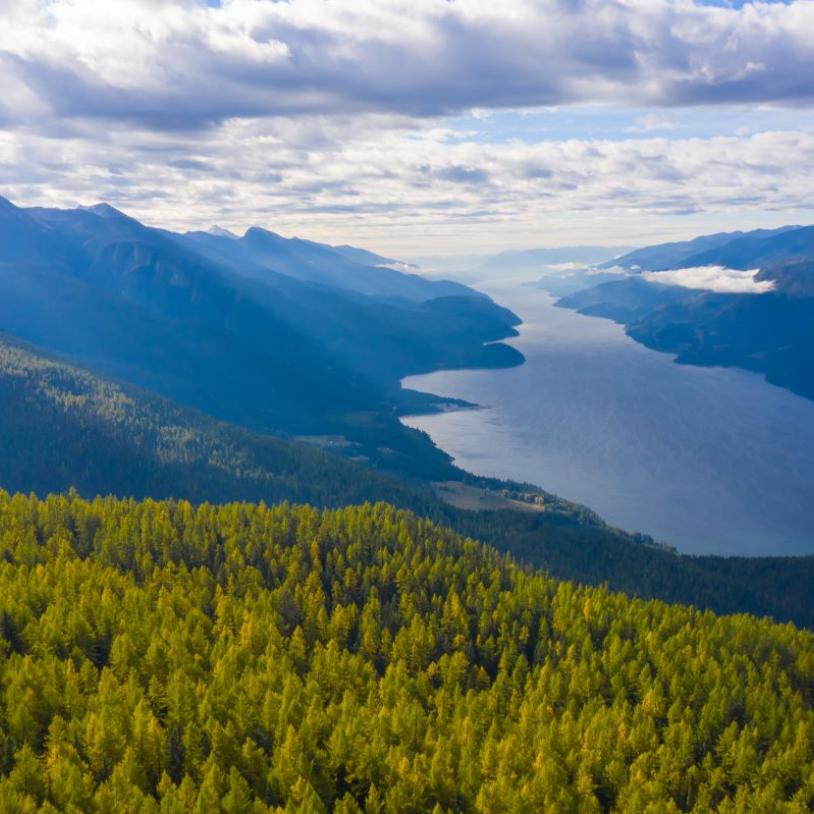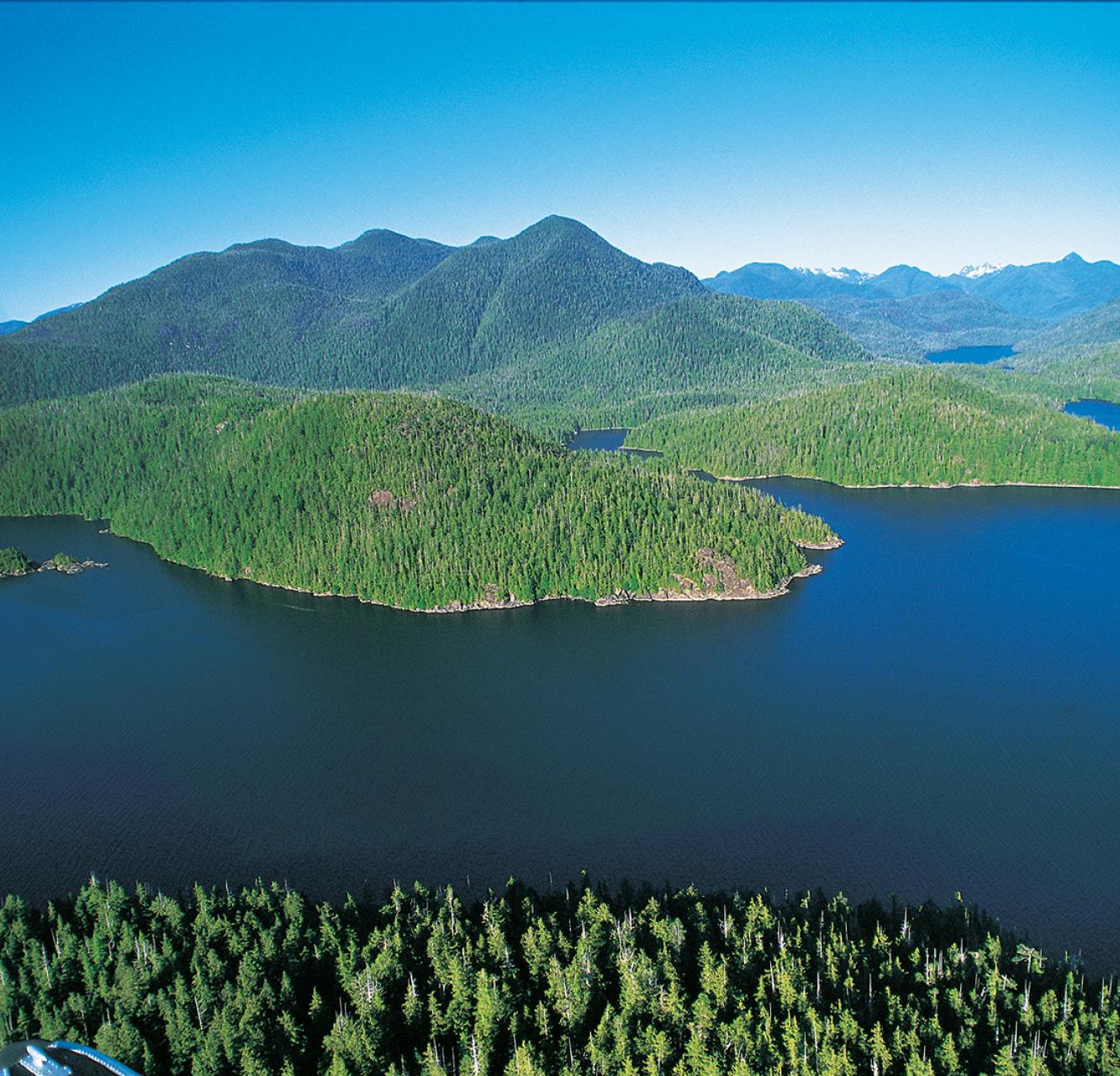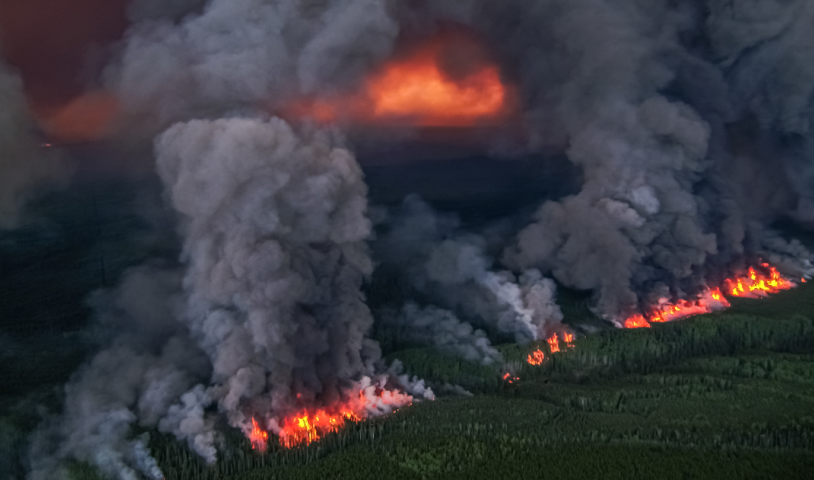Wilderness Spirit ‑ Shared Vision
Saturday, November 14, 1998
November 15th, 1998
By Joe Foy
Flat on my back in the middle of the Squamish Valley logging road I gazed up at the night sky and mulled over some of life's big questions. Earlier that September day I'd hiked out of the bush with several companions only to find a note stuffed under one of the windshield wipers of my van informing us that a gate at mile 39 had been locked by the logging company due to a high risk of forest fire and that someone would be by at 6am the following morning to let us out. So, we drove down to the locked gate, hauled our sleeping bags out of the van and bedded down in the middle of the dusty road.
The sky that night was spectacular. A billion stars blazed, framed by the midnight black slopes of the Coast Range. Shooting stars streaked across the heavens. Below us the Elaho River roared and growled its way between the rock walls of the narrow canyon as it has done every night for millennia.
My mind was filled with the things we'd seen over the past five days. We'd been hiking up the west side of the upper Elaho Valley, into the wild heart of the Stoltmann Wilderness. For a path we'd used trails worn through the under-growth by moose and bear. For shelter we'd set our tents up underneath huge western red cedar trees. We'd feasted on blueberries and drank from frothing mountain streams. We'd stood at the edge of a 100 metre deep sheer-sided canyon and peered down at the Elaho River below. We'd seen many footprints in the wet earth beside the marshes -- none of them human. We'd been walking through a land not shaped by human hands. We had glimpsed the Earth as if new again.
What a powerful spiritual experience. Walking in the Stoltmann Wilderness was like looking up at the stars -- like looking into the face of the Creator.
I wonder why Canadians in general and British Columbians in particular do not have a widespread tradition of sacred places, known, revered and protected by all. Certainly First Nations do have such places. Special groves of trees, ancient big-house sites, rock paintings, mountains and valleys throughout B.C. have special meaning to the tribal groups within whose territory they fall. The Stein Valley, in the Fraser Canyon is one such place -- steadfastly defended by the Nlaka'pamux and Lil'wat First Nations since the beginning of time.
Things are changing in B.C., though slowly. Many individuals and families have incorporated the idea of sacredness of wild places into their everyday lives, thanks largely to lessons learned from First Nations cultures.
Other countries and cultures have sacred places. Japan, India, Israel, Saudi Arabia, and England have sacred rivers, stones and groves known to all citizens. These special spiritual places are the sinew, blood and bone that tie the present generation to all that have come before and to all that will come after. No one in their right mind would think of desecrating these places. They are to be cherished for all time.
I thought of what I'd seen earlier in the day. We had walked out of the Stoltmann Wilderness back-country into a huge clearcut. International Forest Products had been pushing new logging roads all summer, relentlessly levelling the ancient forest. I and my companions walked amongst the ruined remains of an ancient redcedar grove. Only last fall I had camped in this very spot. At that time this place was a palace whose green canopy roof was supported by massive redcedar columns 10 metres in circumference and 50 metres high, whose floor was carpeted in ferns and moss and whose building took centuries to complete. Now it was stumps, mud, steel cable and the smell of diesel oil.
I believe that the upper Elaho Valley and the entire Stoltmann Wilderness, is a powerful sacred place that is being desecrated by International Forest Products. Unfortunately it is not the only sacred place to be treated in this way. All over the province logging companies sense the growing public sentiment to preserve ancient landscapes like the Stoltmann Wilderness. The timber companies are racing to road the last wild valleys and fall the best big-tree groves while they still can, even if it means losing money in this time of depressed lumber markets.
International Forest Products actually closed their Squamish lumber in July, laying off 160 workers. Interfor announced in October that they plan to open a log chipping facility on the old mill grounds to grind up oldgrowth logs from the Stoltmann Wilderness into chips for the pulp market. The chipping plant is expected to employ one or two dozen workers and to lose hundreds of thousands of dollars in the first year of operation. All this to justify cutting down one of the most sacred places on Earth.
There is hope. Since 1995 thousands of people have made the pilgrimage into the Stoltmann Wilderness. They have come to hike along the Wilderness Committee's trail in the upper Elaho Valley. They have come to participate in the Squamish Nation's Witness Campouts in the Sims Creek Valley. A few wilderness adventurers have even trekked into he remote Salal Creek Valley and Upper Bridge Valley.
Every time a person enters the Stoltmann Wilderness and meets the Creator face to face, the balance of hope tips a little more in favour of preservation. Looking up at the night sky I imagined every star to represent a person visiting the Stoltmann Wilderness, now and generations into the future. I fell asleep counting them.
The Western Canada Wilderness Committee's Endangered Wilderness Calendars are hot off the press. They make great gifts, and when bought in bulk, are super fund-raisers for your
local environment group. Also, don't miss our up coming slide show and Rainforest book launch. Meet author Graham Osborne and see his slide show about the endangered B.C. rainforest on November 17, 7:30pm at the Vancouver Planetarium. Tickets $5.00 at the door. For more information call us at 683-8220.





